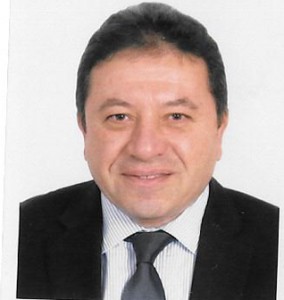The three pillars of Egypt’s struggle against terrorism
On February 9, 2018, the armed forces of Egypt launched the “Comprehensive Military Operation Sinai 2018 CMOS,” to purge the Sinai of terrorism and bring to an end a threat that has been recurrent since the June 30, 2013 Revolution that toppled the Muslim Brotherhood from power.
Commenting on the valour of the army and police during the operation, President Abdel-Fattah El-Sisi said “I follow with pride the heroics of my sons from the armed forces and the police to purge the beloved land of Egypt from terrorists, the enemies of life.”
Political Solution:
Sinai 2018, once again crystallizes the historical and constitutional role of the Egyptian army as the shield and armor that protects the homeland, safeguards its security and preserves the integrity of its territories.
“Sinai 2018” also exposes the blatant lies and sheer fraud by the Muslim Brotherhood, its terrorist allies and the two countries that support them; lies that are blindly circulated by some international media outlets claiming that the developmental role undertaken by the army overshadows its defensive role.
Over the last four years, the Egyptian Army has relentlessly continued enhancing its operational and combat capabilities, thus ranking for the first time as the tenth strongest army worldwide in 2017. Henceforth, this ranking stands as the clearest evidence that the Egyptian Army developmental role has never overshadowed its combat capabilities, bearing in mind the important fact that the Egyptian Army is an army composed only of Egypt’s sons.
It is both inconceivable and unreasonable to try to link the bloody terrorism that Egypt confronts inside and outside Sinai with thousands of causalities and injuries on one hand and what some media outlets claim as “political solutions” to this heinous threat on the other hand; political solutions that these outlets falsely claim that the Egyptian state failed to adopt.
Three domains
When analysing the outcome of counter-terrorism policies, many think tanks in the West and terrorism scholars in Egypt focus only on security while ignoring other aspects of anti-terrorism policies. The conclusion, therefore, is that terrorism is combated through “militarisation” and “security measures”.
Terrorism literature specifies three main domains of anti-terrorism policies. First, engaging with terrorist elements directly; second, dealing with terrorism victims; third, preventing the spread of terrorism through inoculating society through effective counter-terrorism programmes.
When applying these three domains to Egypt’s anti-terrorism policies, we find there is real non-military and non-security work being done, but that it needs improvement. It is important to take these three factors into consideration when analysing last year’s efforts to combat terrorism.
In the first domain, last year saw more raids and combat operations by security forces that led to pre-emptive strikes against terrorist cells. Security agencies succeeded in dismantling terrorist cells focused on recruiting new members, such as Amr Saad cell, while continuing the state of emergency in North Sinai, engaging more air strikes targeting terrorists, and prosecuting more terrorist cases in court.
Also, the Supreme Council for Combating Terrorism was formed in July 2017, which in theory is a step in the right direction since this is a body that would at least coordinate efforts to combat terrorism, extremism and decide on a national strategy.
In the second domain, the government continued to pay monetary compensation to victims on a case-by-case basis.
For example, after the attack on Al-Rawda Mosque in Beir Abd, President Abdel-Fattah Al-Sisi ordered payment of LE200,000 to the families of each of those killed, and LE50,000 to each injured victim. The Ministry of Education also waived the fees at government schools for the children of those killed, and a decision was taken to prioritise hiring the offspring of martyrs in government offices.
In the third domain, inoculating society against extremism, which mostly focuses on addressing the causes of terrorism, existing efforts continue to deal with religious extremism as the main feature of the radicalism responsible for terrorist attacks. But this ignores the political and social dimensions of terrorism in most cases.
Good Example
Combating radical ideology on the Internet is a good example because it is necessary for these efforts to be comprehensive and develop suitable messages to reach Internet users who are being targeted by terrorists.
However, it is worthy of praise that progress was made in how it views counter-terrorism, and development, especially since these policies were adopted at a time when terrorists planned and carried out substantial attacks last year.
His Excellency Tarek sallam is Egypt’s Ambassador to Uganda


 African Heads of state head to South Korea next week for Summit talks
African Heads of state head to South Korea next week for Summit talks
 Trading leads as main source of income for Ugandans
Trading leads as main source of income for Ugandans
 New leadership for bankers’ umbrella as total assets top $12 billion
New leadership for bankers’ umbrella as total assets top $12 billion
 Brussels Airlines to announce Nairobi service
Brussels Airlines to announce Nairobi service
 SITA promises enhanced travel experience after Materna acquisition
SITA promises enhanced travel experience after Materna acquisition
 Saudia’s 105 aircraft order stretches A320neo lead over rival Max
Saudia’s 105 aircraft order stretches A320neo lead over rival Max
